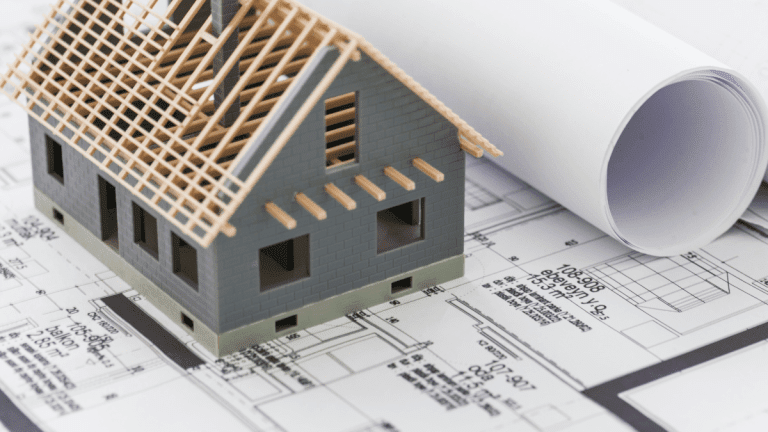Have you ever thought of exploring the world of Accessory Dwelling Units (ADUs), i.e., to expand some extra living space on your existing property, generate rental income, or provide a home for a family member?
Well, if you nod on all of this, you’re in for a treat!
Accessory Dwelling Units (ADUs) are the unsung heroes of housing solutions as they are versatile additions to your residential properties. These nifty structures are versatile and for that matter, it’s to note that not all ADUs are created equal. Both detached and attached ADUs have their own benefits and can significantly impact your decision-making process.
In this article, we’ll take a closer look at ADUs, provide a brief overview of both detached and attached ADUs, and discuss why it’s essential to comprehend the distinctions between the two.
Definition of Attached ADUs
As the name suggests, attached ADUs are living spaces that are physically connected to the core residence on your property. These units can take various forms, such as a basement apartment, a converted garage, or an extension to the main house.
One of the defining characteristics of attached ADUs is their seamless integration with the existing structure. They’ve one or more walls attached to the main house, a separate entrance, and often feature a self-contained living space with a kitchen, bathroom, and sleeping area.
Advantages of attached ADUs include convenience and accessibility. Residents of these units have easy access to the main house, making shared activities and interactions with the household members more straightforward. Attached ADUs also tend to be less expensive to construct compared to detached units, as they utilize existing infrastructure.
However, there are drawbacks to consider as well. Attached ADUs may have limited privacy for both the main house and the ADU occupants. Noise transfer can be a concern, and in some areas, zoning regulations may impose restrictions on the creation of attached ADUs.
Understanding the characteristics and pros and cons of attached ADUs is crucial when deciding whether to pursue this type of dwelling unit on your property, as it helps you make an informed choice that aligns with your needs and preferences.
Definition of Detached ADUs
Detached ADUs are independent, standalone structures located on the same property as the primary residence. These ADUs are often referred to as backyard cottages, granny flats, or guesthouses. Detached ADUs are distinct buildings designed to provide self-contained living spaces.
Detached ADUs typically have their own foundations, walls, and roofs, completely separate from the main house. They typically feature a living area, kitchen, bathroom, and bedroom, offering residents a high degree of privacy and autonomy. They’re ideal for those who desire a separate living space for family members, guests, or rental income.
Advantages of detached ADUs include enhanced privacy and independence, reduced noise transfer, and more design flexibility. They can serve as a source of rental income or provide comfortable accommodations for family members while maintaining separate living spaces. Additionally, detached ADUs may offer a greater sense of “home away from home.”
However, there are considerations to keep in mind. Building a detached ADU may involve higher construction costs compared to converting existing space in the main house. Additionally, zoning regulations and space constraints on the property may limit the feasibility of adding a detached unit.
Being aware of the characteristics and pros and cons of detached ADUs empowers homeowners to make a well-informed decision about whether this type of dwelling unit aligns with their goals and property layout.
Detached ADU vs. Attached ADU
| Attached ADU | Detached ADU | |
| Maximum size restrictions | Often subject to stricter size limits determined by the existing structure. | Generally have more flexibility in terms of size, allowing for larger units. |
| Building codes and regulations | Must adhere to specific codes for shared walls, fire safety, and more. | Must also comply with building codes but may have more freedom in design. |
| Privacy and noise concerns | May be subject to fewer zoning restrictions due to connection to the primary residence. | Often subject to stricter zoning regulations due to their standalone nature. |
| Cost differences | Can be more cost-effective as they utilize existing structures. | Tends to be more expensive due to the need for a separate building. |
| Resale value | May not add as much value to the property as a detached unit. | Often seen as a desirable feature and can increase property value. |
Factors to Consider When Choosing Between Attached and Detached ADUs
Budget
When it comes to choosing between attached and detached ADUs, your wallet is a major player. The attached units usually save you some green since they make use of existing structures. Detached ones, though, might need a bit more upfront investment due to building a separate structure. Take a good look at your finances and figure out which option fits snugly into your budget.
Lot size and zoning regulations
The attached ADUs might catch a bit of a break in the zoning department because they’re linked to the main house. Detached ones, however, could face more red tape. Measure up your land and give your local zoning laws a read to see which type of ADU can set up shop.
Long-term plans for the property
If expansion or changes are on your mind, an attached ADU could mesh better with future renovations. But if you’re after separate living spaces or have specific purposes in mind, a detached unit might be the more flexible choice.
Personal preferences and lifestyle
Attached ADUs offer a close-knit connection to the main house, which can be a game-changer for families with shared living arrangements. On the flip side, detached units give you more privacy and independence, making them great for rentals or as a separate space for extended family.
Examples of Attached and Detached ADUs
Case study of attached ADUs
Location: Suburban Massachusetts
Description:
Brian, a seasoned real estate professional, and his wife, Brooks, embarked on a unique housing journey for Brooks’ 88-year-old mother. Recognizing the potential of Accessory Dwelling Units (ADUs), they chose to incorporate one into their own property. The design centered around a one-story addition seamlessly integrated with their classic Cape-style home.
Purpose:
The ADU served a dual purpose. It provided Brooks’ mother with a space that balanced independence with proximity to family. Simultaneously, it offered Brian and Brooks the flexibility of additional housing for future needs and potential income generation.
Result:
The thoughtful design and integration of the ADU not only accommodated Brooks’ mother’s desire for independence but also enriched family bonds. The extended housing option enhanced the property’s value and showcased a creative approach to multigenerational living in a classic suburban setting.
Case studies of detached ADUs
Location: Northeast Portland, Oregon
Description:
Catherine Butler, inspired by her real estate agent and a local ADU tour, set out to create her own detached ADU on a corner lot in NE Portland. Her vision was to design and craft a property that reflected her preferences, ultimately using the ADU as a part-time second home in the city.
Purpose:
The primary driver behind Catherine’s ADU project was the potential for rental income. Additionally, she aimed to have a hand in designing and owning a property in Portland, complementing her existing home in the Colombia River Gorge.
Result:
Catherine financed the ADU project with a home equity line of credit and worked closely with architect Dave Spitzer. Storage space was a pivotal consideration in the design process. The completed detached ADU not only provided a rental income source but also fulfilled Catherine’s dream of owning a property she helped design, adding a valuable asset to her real estate portfolio.
Types of ADUs
Junior ADUs
Junior Accessory Dwelling Units, or JADUs, are compact living spaces typically carved out within an existing home. They’re like the little siblings of ADUs, designed for smaller spaces. JADUs come with their own bathroom and kitchenette, offering a semi-independent living arrangement. They’re a fantastic option for homeowners seeking to maximize space without major construction.
In-law units
In-law units are essentially secondary living spaces within a main residence, designed to accommodate extended family members. They provide a degree of privacy while keeping loved ones close. These units often have their own bedroom, bathroom, and sometimes even a small kitchen area. In-law units are a popular choice for multigenerational households.
Cottages
Cottages, also known as standalone ADUs, are entirely separate structures on a property. They’re like mini-homes, offering complete living spaces with their own amenities. Cottages can be customized to fit various lifestyles and purposes, from rental properties to private retreats. They’re a versatile option, adding both functionality and charm to a residential plot.
Steps to Building an ADU
Regulations and Permits
First things first, get familiar with your local zoning laws and building codes. These regulations will dictate what’s allowed on your property. Obtain the necessary permits before diving into any construction.
Finding a Designer and Builder
Hire a designer and builder with experience in ADU projects. They’ll help bring your vision to life and ensure all plans adhere to building codes and regulations.
Basic Building Science
Understand the fundamentals of construction. This includes knowledge of foundations, framing, electrical, plumbing, and insulation. It’s the backbone of a solid ADU.
Options for Using or Renting the ADU
Decide how you’ll use the ADU. Will it be a rental unit, a space for family, or a personal retreat? This decision will influence the design and layout.
ADU Design Principles
Consider factors like functionality, aesthetics, and space efficiency. Make sure the design aligns with your needs and complements the existing property.
ADU Utility Connections
Plan for utility connections like water, electricity, and sewage. Ensure these connections are in compliance with local regulations and codes.
Step-by-Step Process to ADU Development
Follow a structured approach: site preparation, foundation, framing, utilities installation, interior work, and finishing touches. Regular inspections are crucial to ensure compliance at each stage. This process ensures a smooth journey from start to finish.
Remember, consult our ADU experts and keep open lines of communication throughout the project.
Conclusion
It’s important to highlight the key differences between attached and detached ADUs. The attached units are budget-friendly and offer a closer connection to the main house, while detached units provide more privacy and flexibility, albeit at a potentially higher cost.
When choosing the right type of ADU for your property, consider your budget, lot size, long-term plans, and personal preferences.
With thoughtful planning and adherence to regulations, these dwelling units can pave the way for a more inclusive and sustainable housing future. So, whether you’re embracing the coziness of attached or the freedom of detached, ADUs are a win-win for homeowners and communities alike.







